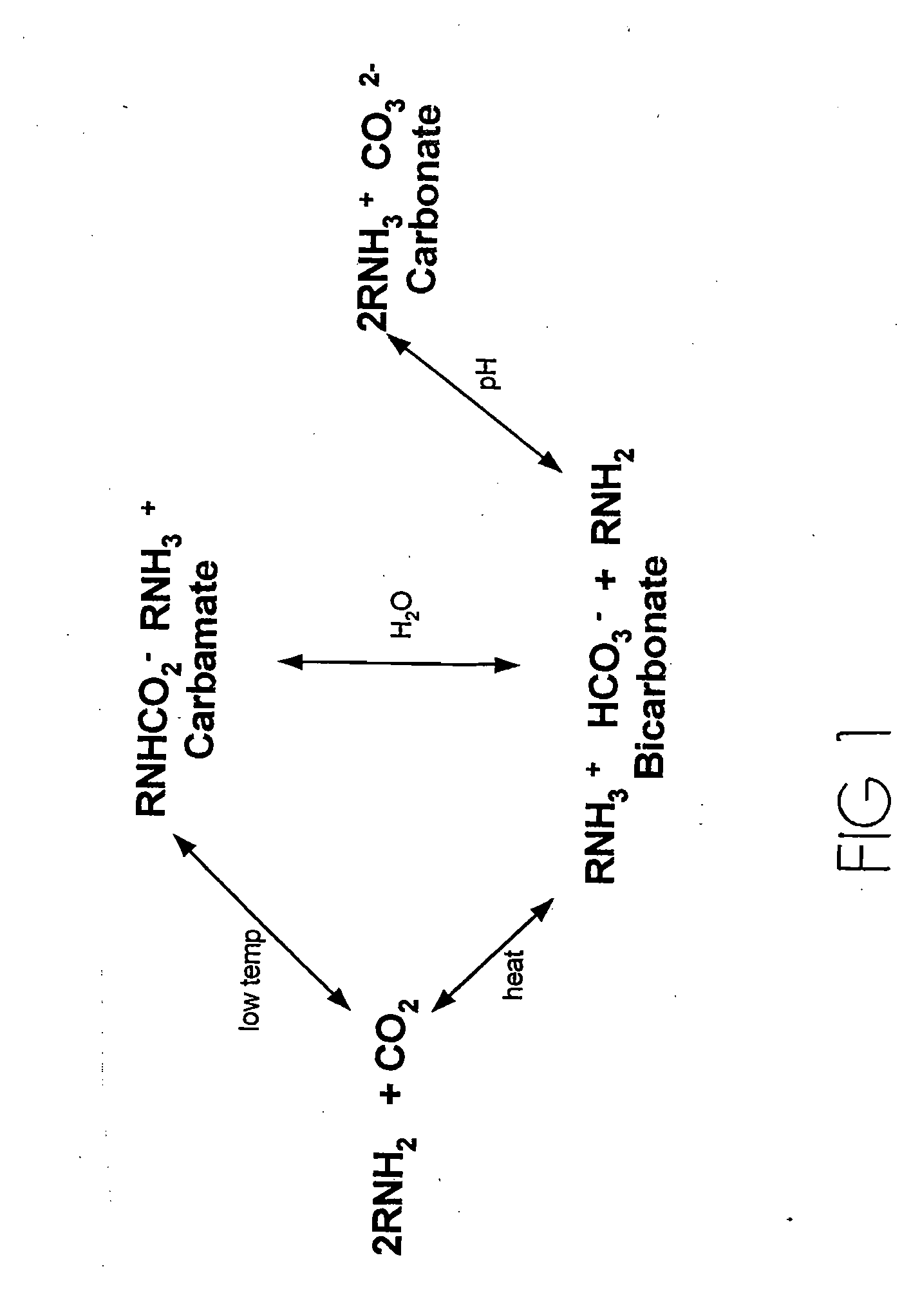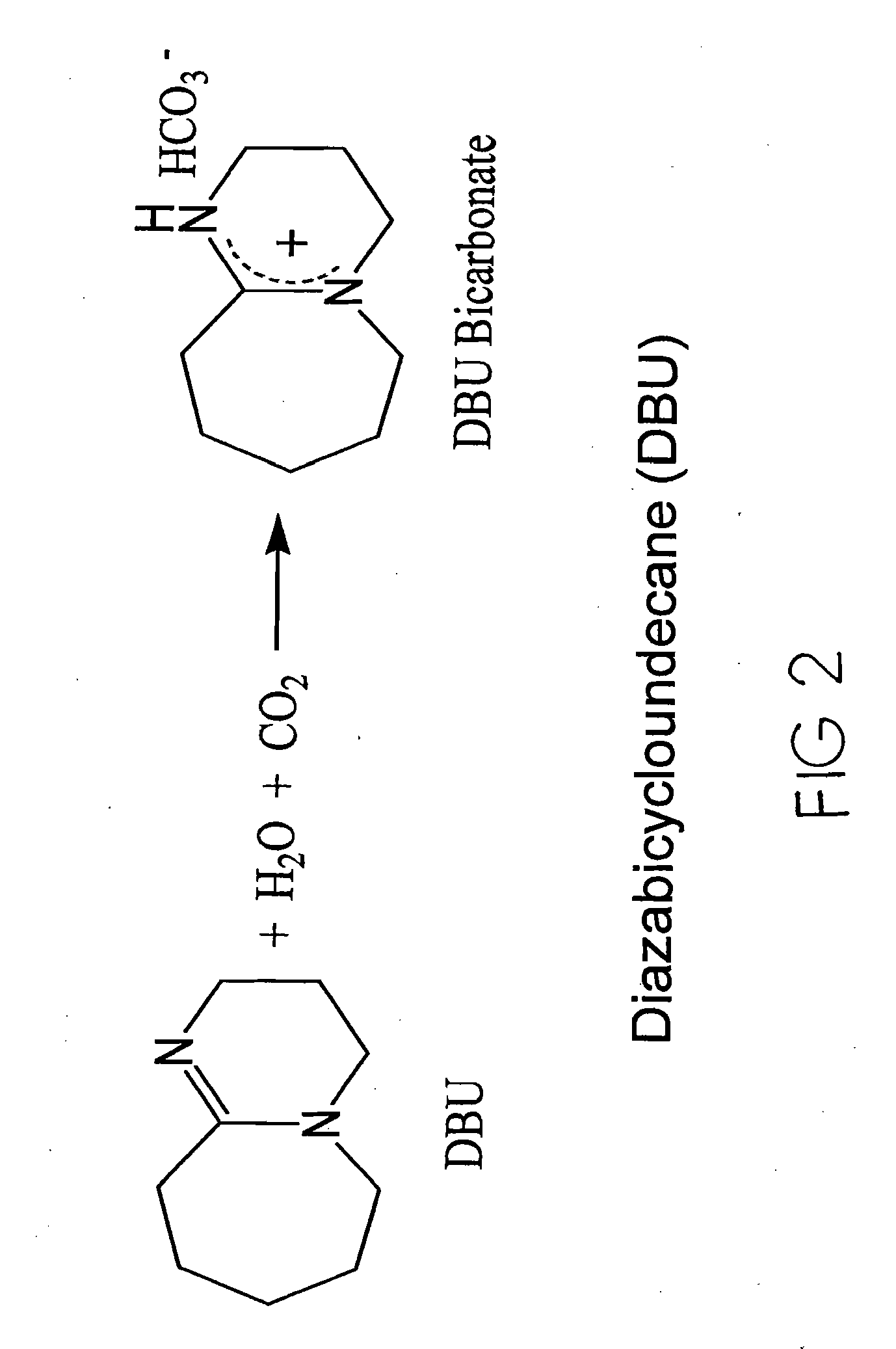Regenerable solid imine sorbents
a sorbent and solid technology, applied in the field of sorbents, can solve the problems of large-scale operation of these technologies, high energy consumption, degradation of amine, etc., and achieve the effects of reducing costs, high boiling points, and reducing costs
- Summary
- Abstract
- Description
- Claims
- Application Information
AI Technical Summary
Benefits of technology
Problems solved by technology
Method used
Image
Examples
Embodiment Construction
[0043]The inventors have found two new classes of new amine-based sorbents for the removal of acid anhydrides from effluent gases. Target acid anhydrides, but are not limited to, CO2, SO2, and NOx.
[0044]One class of sorbents has tertiary amines immobilized in the pores of polymer substrate supports wherein the support material to amine molar ratio is 5:1. This first class is depicted in FIG. 4A. The second class of sorbents is defined as amines chemically bonded to the surface of polymeric substrates, and thus are amine-functional polymeric sorbents. A depiction of this second class of sorbents is FIG. 4B-4C.
[0045]A salient feature of the invention is that both classes of sorbents adsorb acid anhydrides in a 1:1 molar ratio. A second salient feature is that both classes of sorbents can adsorb acid anhydrides at temperatures above 25° C., and at least as high as 85° C.
Immobilized Amine Sorbent Detail
[0046]The amines for the invented immobilized amine-based sorbents include, but are n...
PUM
| Property | Measurement | Unit |
|---|---|---|
| Temperature | aaaaa | aaaaa |
| Temperature | aaaaa | aaaaa |
| Temperature | aaaaa | aaaaa |
Abstract
Description
Claims
Application Information
 Login to View More
Login to View More - R&D
- Intellectual Property
- Life Sciences
- Materials
- Tech Scout
- Unparalleled Data Quality
- Higher Quality Content
- 60% Fewer Hallucinations
Browse by: Latest US Patents, China's latest patents, Technical Efficacy Thesaurus, Application Domain, Technology Topic, Popular Technical Reports.
© 2025 PatSnap. All rights reserved.Legal|Privacy policy|Modern Slavery Act Transparency Statement|Sitemap|About US| Contact US: help@patsnap.com



